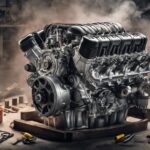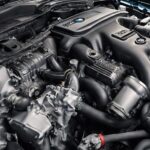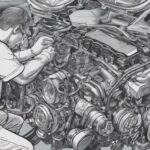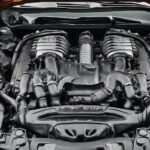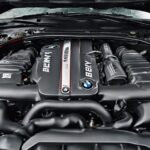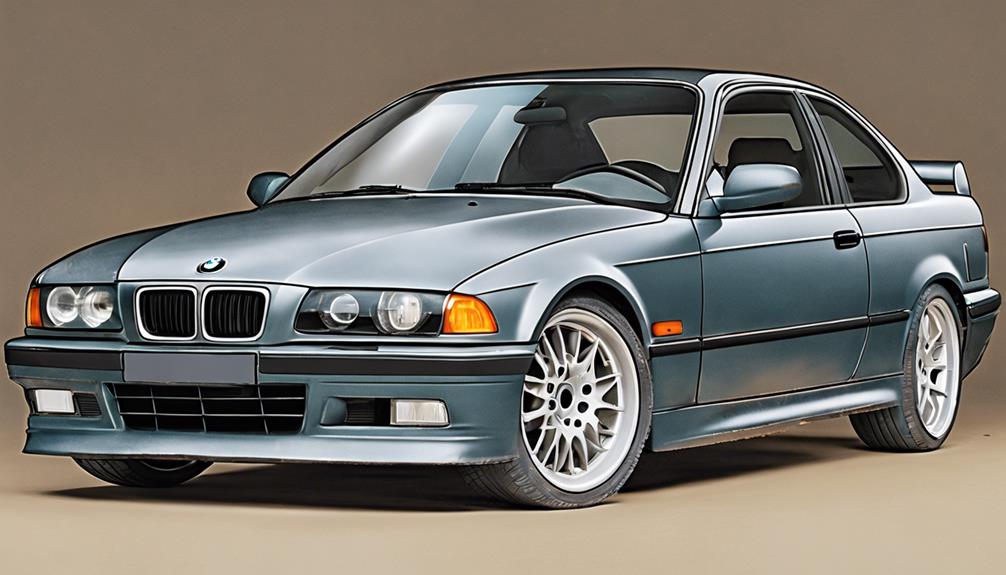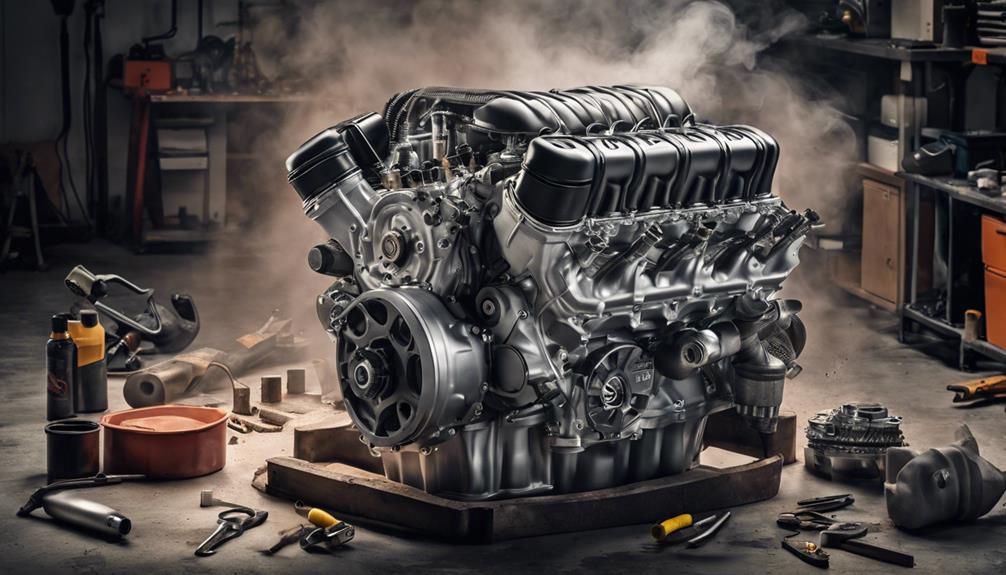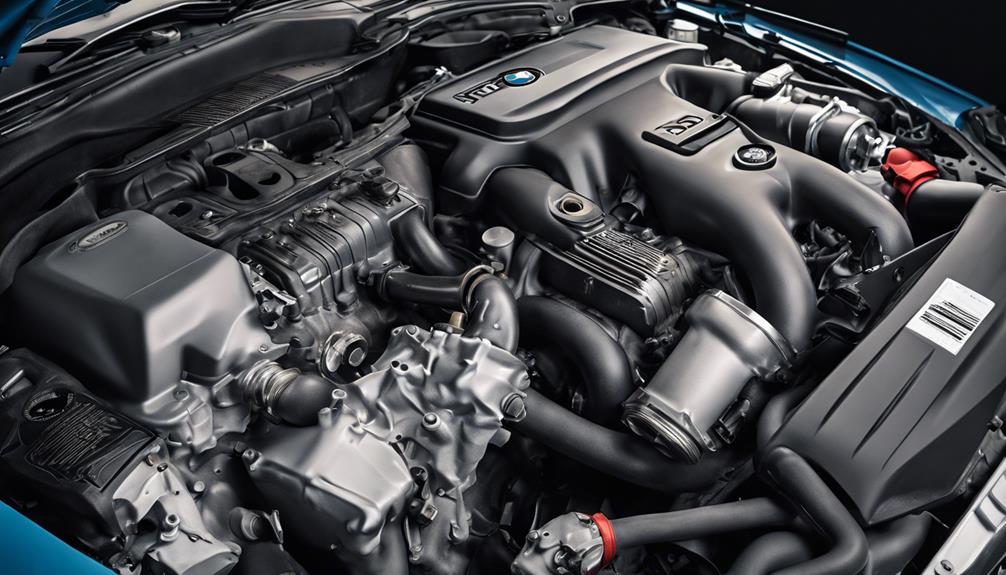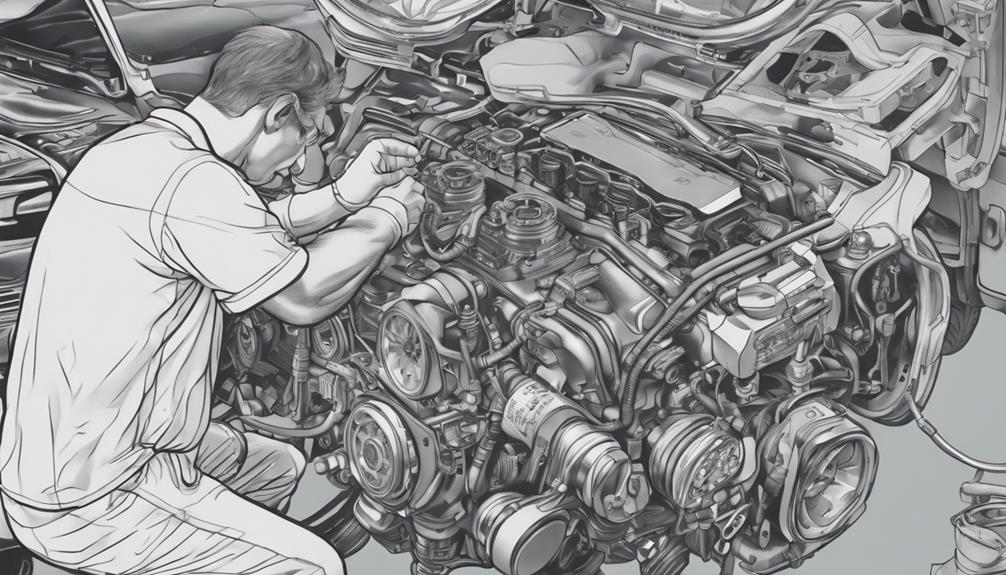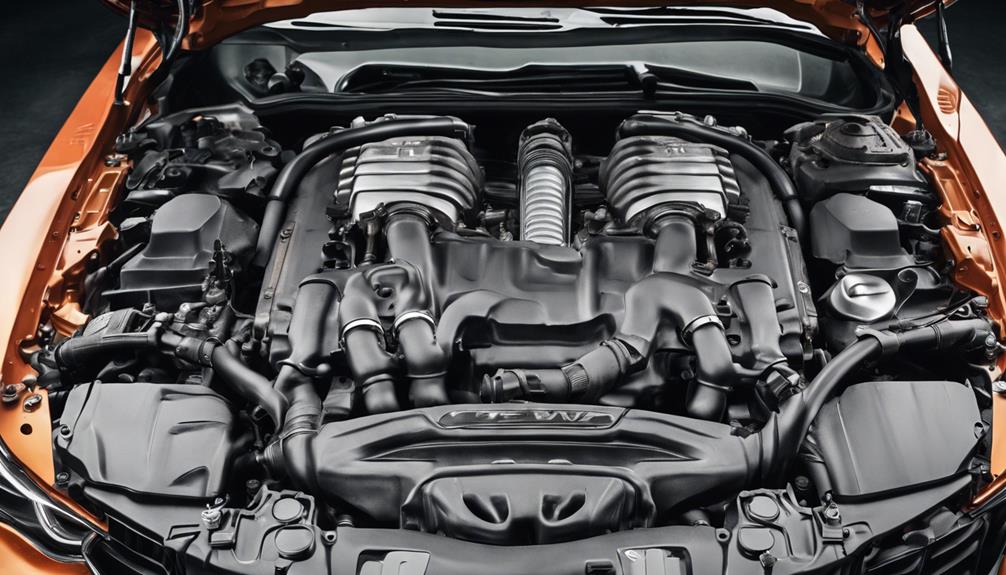Owning a BMW E36 comes with its quirks. Keep an eye out for rust near the wheel arches, those pre-1994 models have a flair for it. Skip the mud flaps to keep moisture away from rust-prone areas. The plastic clips in the early models' electric windows tend to snap unexpectedly. Don't be surprised by door noises in the '96 versions; rubber seals can be a tad temperamental. Feeling intrigued by these tidbits?
Key Takeaways
- Rust issues around wheel arches and panel edges in pre-1994 models.
- Monitor oil leaks to prevent engine damage.
- Watch for hot clutch shudder in E36 transmissions.
- Worn lower control arm bushings affect ride quality.
- DME compartment flooding in early models can cause electrical problems.
Body and Exterior Components

When examining your BMW E36 for potential issues, the body and exterior components require careful attention to prevent common problems from escalating.
Rust issues, particularly around the wheel arches and panel edges, are prevalent in pre-1994 models. Avoiding mud flaps can help deter moisture from becoming trapped and speeding up rust formation.
Moreover, early E36 models with front electric windows had plastic clips that were prone to breaking, resulting in window issues. For 1996 E36 vehicles, be mindful of potential door noises, often caused by rubber seal problems on late model saloons.
It's noteworthy that BMW experimented with water-based paint on early E36 cars, taking a few years to perfect the application process. By paying close attention to these details, you can guarantee your BMW E36 stays in top condition, free from these typical body and exterior component concerns.
Engine Maintenance Concerns
You've got to keep a close eye on oil leaks in your BMW E36 to prevent potential engine damage.
The cooling system is another vital area where problems can arise, so make sure to maintain it regularly.
Also, don't forget about the importance of timely timing belt replacements to avoid costly engine repairs.
Oil Leak Issues
Experiencing oil leak issues in your BMW E36 can be a concerning problem that demands immediate attention to prevent further engine complications. When dealing with oil leaks, especially from the valve cover gasket, it's vital to address the issue promptly to maintain peak engine performance and avoid potential engine damage.
Here are some key points to take into account:
- Valve cover gasket failure is a common cause of oil leaks in BMW E36 models.
- Timely replacement of the valve cover gasket is essential to prevent oil loss and uphold engine efficiency.
- Oil leaks onto the exhaust manifold can result in a burning smell in the cabin.
- Quickly addressing oil leaks can prevent engine damage and guarantee proper lubrication.
- Regular inspection and maintenance can help avoid costly repairs associated with oil leaks.
Cooling System Problems
To maintain peak engine performance and prevent costly repairs, vigilance in addressing cooling system problems is paramount for BMW E36 owners. The water pump, radiator, and expansion tank should be replaced around 100k miles to avoid overheating issues that could lead to a blown head gasket.
Neglecting these components may result in significant problems, necessitating replacement kits that could cost a few hundred dollars. Regularly checking for water in the oil and vice versa can help in early detection of cooling system failures.
Overheating must be avoided at all costs as it can severely impact the engine's health and performance. Remember, consistent maintenance of the cooling system is key to ensuring the longevity and reliability of your BMW E36.
Timing Belt Replacement
If you own a BMW E36, understanding the nuances of timing chain maintenance is essential for ensuring your engine's longevity and performance. Here are some key points to keep in mind:
- Timing belt replacement isn't required for BMW E36 models as they use timing chains instead.
- The M42 and M44 engines in some E36 models have timing chains designed to last the engine's life.
- Timing chain replacement is usually needed only in cases of failure or significant wear.
- Proper maintenance of the timing chain tensioner and guides is vital for longevity.
- Following the manufacturer's guidelines for inspecting and maintaining timing chain components is recommended to prevent issues.
Transmission and Drivetrain Issues
When it comes to BMW E36 vehicles, ensuring the smooth operation of the transmission and drivetrain is essential for best performance and longevity. Hot clutch shudder can be a pesky issue in E36 transmissions, particularly in warmer climates, so keeping an eye on the clutch plate is important.
If you notice an odd knocking sound under acceleration or cornering, it might be a sign of a failing driveshaft center bearing that needs attention. For manual gearboxes, some E36 models had complaints of jumping out of gear, which were fortunately covered under warranty.
Regular fluid changes are highly recommended for automatic gearboxes, differentials, and power steering systems to maintain the best performance. Additionally, addressing sticking calipers, ABS faults, and worn components promptly is key to preserving the health of your E36 transmission and drivetrain.
Brake Problems
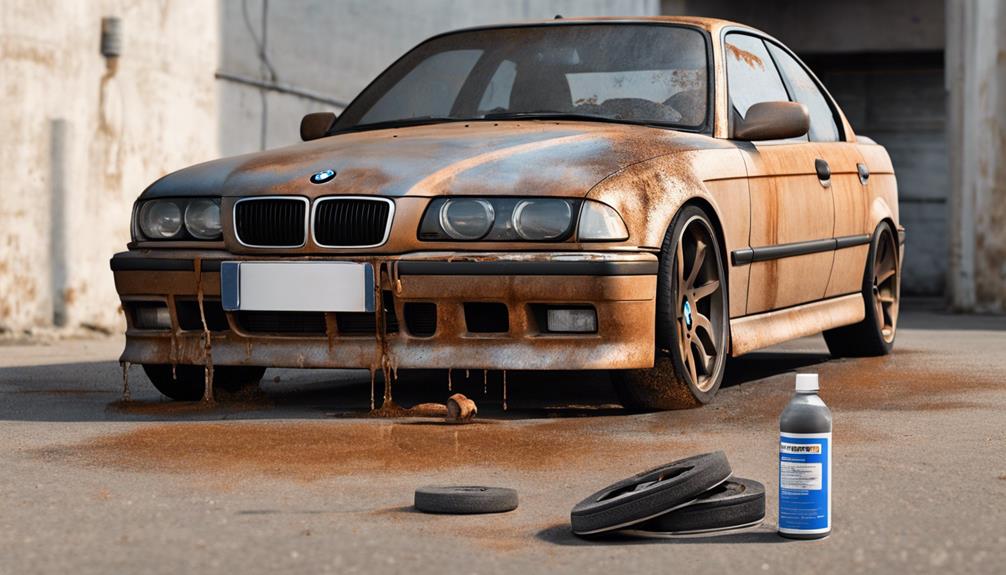
You might notice brake fluid leaks under your BMW E36, indicating potential issues with the brake system.
A spongy brake pedal can also be a sign of air in the brake lines or worn brake pads that need replacing.
These problems can compromise your braking performance and should be addressed promptly to guarantee your safety on the road.
Brake Fluid Leaks
Detecting brake fluid leaks in your BMW E36 demands vigilance and immediate action to uphold your vehicle's braking reliability and safety. When facing brake fluid leaks, several key components and indicators come into play:
- A soft brake pedal
- Low brake fluid level
- Deteriorating brake lines
- Issues with the master cylinder
- Visible fluid under the car
Addressing these signs promptly is crucial to prevent further damage and guarantee your safety on the road. Repairing the affected brake components and maintaining a regular inspection schedule can help you catch and resolve brake fluid leaks before they escalate into more severe problems, safeguarding both your BMW E36's performance and your peace of mind.
Spongy Brake Pedal
Experiencing a spongy brake pedal in your BMW E36 may signal underlying issues such as air in the brake lines or worn brake components. Air in the brake lines can reduce the effectiveness of your brakes, causing that unsettling mushy feeling when you press the pedal.
Worn brake components, like brake pads or brake lines, can also lead to a spongy brake pedal, affecting your vehicle's stopping power. Bleeding the brake system is an essential step to eliminate any air bubbles and restore firmness to the brake pedal.
Regular inspections and maintenance are key to preventing spongy pedal issues and ensuring your brakes perform at their best when you need them the most.
Suspension Challenges
Suspension challenges in the BMW E36 present a formidable array of issues that can greatly impact the vehicle's performance and safety. When dealing with the suspension system of your E36, you might encounter the following hurdles:
- Worn out lower control arm bushings can turn your smooth ride into a shaky adventure, making every bump on the road feel like a rocky rollercoaster.
- Keep an ear out for clunking noises from the rear of your E36; failing rear shock mounts can disrupt your suspension's harmony and leave you with a bumpy ride.
- Racing enthusiasts beware! The rear subframe bushing mounts might decide to take a break under extreme conditions, jeopardizing your stability and control.
- Don't let weak front outer ball joints steer you in the wrong direction; make sure your steering responsiveness stays sharp to navigate the roads safely.
- Recall alert! Watch out for corrosion on the lower steering column, an essential component for your safety; address any suspension concerns promptly to stay on the right track.
Steering Complications
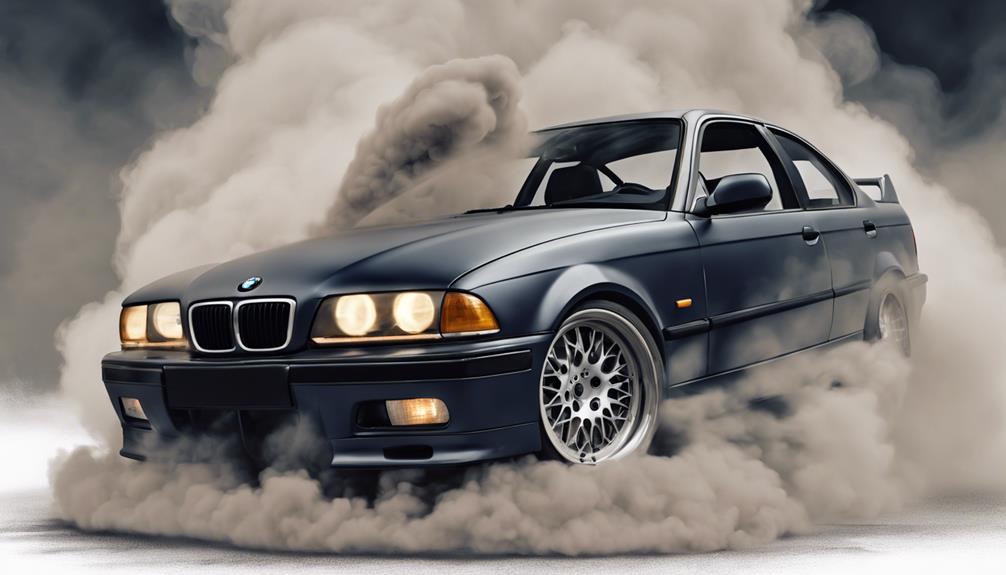
When steering complications arise in your BMW E36, addressing these issues promptly is crucial to maintaining peak performance and safety on the road. Lower steering column replacements may be necessary due to corrosion concerns in these models, affecting the precision of your steering mechanism. Keep an eye out for power steering hose leaks, as they can lead to a loss of steering assist, compromising your ability to maneuver effectively. Worn tie rod ends are another common issue in BMW E36 cars, causing juddering during braking and potentially endangering driving safety.
Furthermore, rear shock mount failures can manifest as clunking noises, signaling the need for immediate suspension repairs. Weak front outer ball joints and rear inner control arm bushings are frequent vulnerabilities in the steering and suspension systems of BMW E36 vehicles, impacting overall handling and stability. Stay vigilant and address these issues promptly to guarantee a smooth and safe driving experience.
Interior Quality Concerns
Revealing the intricate tapestry of the BMW E36's interior exposes a combination of quality nuances and potential pitfalls awaiting examination. When you step inside, keep an eye out for these interior quality concerns:
- The seat fabric in pre-1995 BMW E36 models may show signs of premature wear, impacting the overall aesthetic appeal.
- Post-1994 cars generally boast higher-quality interior components, demonstrating BMW's commitment to improvement over time.
- Don't overlook the airbag warning light; its illumination could result in a critical MoT failure, underscoring the importance of maintaining interior safety features.
- Keep a grip on reality – door handles in BMW E36 models are known to have quality issues that might necessitate your attention and care.
- In warmer climates, watch out for dashboard bulging above the center air vent, as extreme heat can cause unsightly deformations that detract from the interior's sleek design.
Stay vigilant and uphold these elements to guarantee a comfortable and visually appealing driving experience.
Electrical System Issues
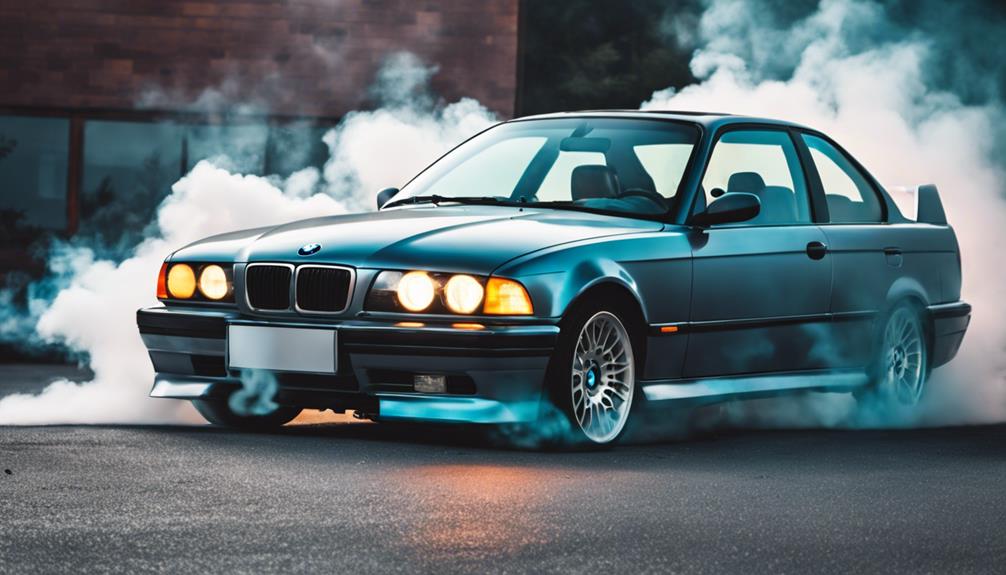
Are you aware of the potential electrical system issues that could impact your BMW E36 driving experience?
From DME compartment flooding causing electrical woes in early models to faulty ignition coils leading to misfires, these issues demand attention.
Corrosion on electrical harnesses may trigger warning lights erroneously, and voltage regulator failures in specific alternators can hamper overall system performance.
Additionally, erratic power window operation might be due to magnet position problems on the motor shaft, affecting convenience and functionality.
Ensuring the significance of your electrical components is vital to maintaining a smooth driving experience in your BMW E36.
Stay vigilant for signs of trouble such as warning lights, misfires, or window irregularities, and address them promptly to prevent larger issues.
Common Engine Faults
Experiencing a ticking sound in your BMW E36's 16-valve engine could be a warning sign of a failing chain tensioner. It's important to address this promptly to avoid potential engine damage.
Apart from this issue, several other common engine faults may arise in your E36:
- Rear Shock Mounts: Keep an eye on the rear shock mounts as they can wear out over time, leading to a bumpy ride and affecting the vehicle's stability.
- Valve Cover: Leaks in the valve cover gasket are a common problem in E36 models, causing oil leaks and potential engine damage if left unattended.
- Cylinder Head: Issues with the cylinder head, such as warping or cracks, can occur in older E36 engines, leading to overheating problems and loss of performance.
- Spark Plugs: Regularly check and replace spark plugs as needed to maintain peak engine performance and fuel efficiency.
- M42 Engines: Pre-September 1993 M42 engines are prone to coolant-related gasket problems, so it's important to monitor coolant levels and address any leaks promptly.
Frequently Asked Questions
Is an E36 Reliable?
Yes, an E36 is reliable with proper care. Regular maintenance can prevent common issues like water pump failures and radiator problems. Addressing known mechanical issues promptly enhances reliability. Enjoy the E36 driving experience!
How Many Miles Do BMW E36 Last?
Your BMW E36 can last well over 200,000 miles with proper care and maintenance. Some drivers have even pushed their E36 vehicles past 300,000 miles. Regular servicing and addressing issues early can extend its lifespan.
Is the E36 Easy to Work On?
Working on the E36 is a breeze! With its accessible engine bay, you can tackle maintenance tasks like oil changes and brake pad swaps easily. Online resources provide detailed guides for repairs, making DIY a joy.
Why Is E36 so Special?
The E36 is special for its blend of performance and comfort, featuring innovative 'Z-axle' suspension. Its diverse body styles cater to various tastes, while its iconic engines like the M50 and S52 offer reliability and power.
Conclusion
So, when it comes to common problems with BMW E36, you've got a laundry list of potential headaches to tackle.
From body and exterior components to engine maintenance concerns, transmission and drivetrain issues, brake problems, suspension challenges, steering complications, interior quality concerns, and electrical system issues, there's no shortage of things to keep an eye on.
But hey, with a little TLC and regular maintenance, you'll be cruising in style in no time.
